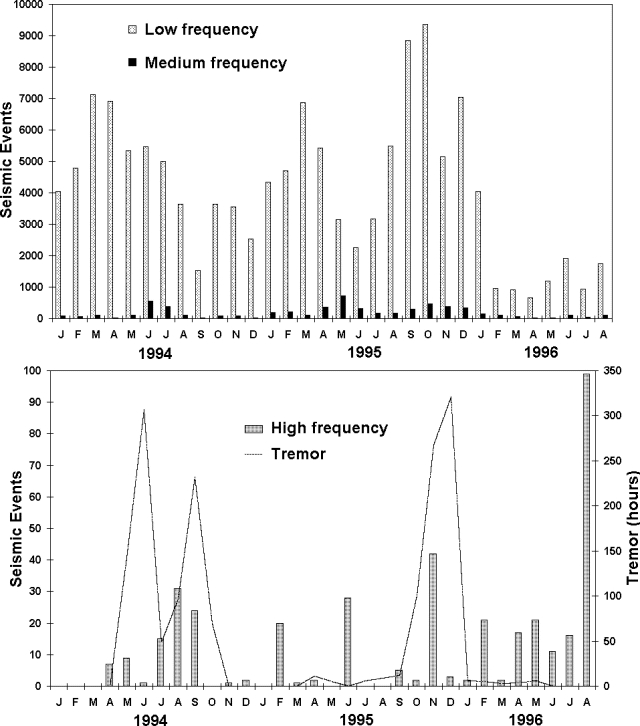Report on Poas (Costa Rica) — August 1996
Bulletin of the Global Volcanism Network, vol. 21, no. 8 (August 1996)
Managing Editor: Richard Wunderman.
Poas (Costa Rica) Steaming but seismically quiet; hurricane rains add to lake
Please cite this report as:
Global Volcanism Program, 1996. Report on Poas (Costa Rica) (Wunderman, R., ed.). Bulletin of the Global Volcanism Network, 21:8. Smithsonian Institution. https://doi.org/10.5479/si.GVP.BGVN199608-345040
Poas
Costa Rica
10.2°N, 84.233°W; summit elev. 2697 m
All times are local (unless otherwise noted)
During July and August the crater lake's water appeared turquoise green; its temperature was generally 35°C. The surface of the crater lake dropped 64 cm during July and then rose 26 cm during August. Rains from Hurricane César on 27-28 July caused the lake to rise 14 cm and to cool by 1°C.
Constant bubbling continued in July on the lake's S and SW shores adjacent to the pyroclastic cone. During August, however, the bubbling decreased and then stopped. The cone contains many moderate-volume fumaroles and although landslides off the crater walls occasionally bury them, new ones appear. Steam emissions sent plumes ~500 m high and made loud pressure-cooker-like noises audible from the overlook; where accessible during July and August the gases had respective temperatures of 91-93 and 94-95°C. Fumaroles along the SE, S, and SW walls had temperatures of 57-93°C. They generally gave off low volumes of gases.
Tremor and seismicity were both relatively low after January 1996 compared to 1994-95 (figure 61). In accord with these seismic data, a survey of the crater and summit distance network failed to disclose any new changes during July.
Geological Summary. The broad vegetated edifice of Poás, one of the most active volcanoes of Costa Rica, contains three craters along a N-S line. The frequently visited multi-hued summit crater lakes of the basaltic-to-dacitic volcano are easily accessible by vehicle from the nearby capital city of San José. A N-S-trending fissure cutting the complex stratovolcano extends to the lower N flank, where it has produced the Congo stratovolcano and several lake-filled maars. The southernmost of the two summit crater lakes, Botos, last erupted about 7,500 years ago. The more prominent geothermally heated northern lake, Laguna Caliente, is one of the world's most acidic natural lakes, with a pH of near zero. It has been the site of frequent phreatic and phreatomagmatic eruptions since an eruption was reported in 1828. Eruptions often include geyser-like ejections of crater-lake water.
Information Contacts: E. Fernández, E. Duarte, V. Barboza, R. Van der Laat, E. Hernandez, M. Martinez, and R. Sáenz, Observatorio Vulcanológico y Sismológico de Costa Rica, Universidad Nacional (OVSICORI-UNA).


